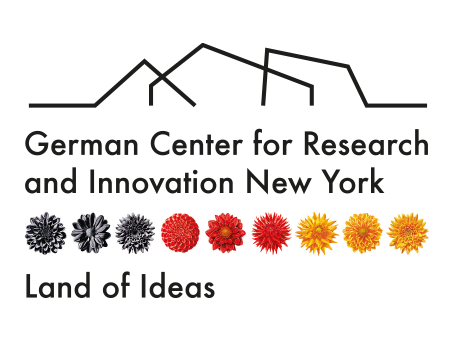Interview with Viola Bartels
 © DWIH New York
© DWIH New York
Manual work often leads to physical strain and injuries – a reality Viola Bartels experienced firsthand during her work in orthopedic technology. Together with her co-founder Miguel Bravo Cabrera, she established Digity, a start-up based in Göttingen specializing in hand and finger exoskeletons.
In November, both founders participated in our STEP USA University Program, a dynamic 4-day startup bootcamp held in the heart of New York City. The program offered interactive seminars, workshops, and networking opportunities, helping them lay the groundwork for a successful expansion into the U.S. market.
In this interview, we explore the origins of Digity, hear about the founders’ experiences with the STEP USA University program, and learn what’s next on the journey for this innovative German startup.
Hi Viola, what exactly is a finger exoskeleton?
A finger exoskeleton is a wearable external support structure around the finger that can be adapted for various use cases. Our first product, ARTUS, is designed specifically for industrial environments, offering ergonomic support that prevents injury and enhances productivity. Finger injuries and strain are common in manual work, often leading to chronic pain and long-term health issues. By supporting the fingers during repetitive or high-strain tasks, ARTUS helps reduce these risks, making it an essential tool for industries with high manual demands.
 Digity’s finger exoskeleton ARTUS
Digity’s finger exoskeleton ARTUS
How did you come up with the idea for the company?
The idea for Digity began with my co-founder, Miguel, whose bachelor’s thesis focused on biomechanics and hand mobility initiated the concept of a hand-wearable exoskeleton. His initial work laid the groundwork for what would eventually become our focus on ergonomic solutions for hand support. Years later, this concept led to securing an EXIST-Transfer of Research grant by the German Ministry for Economic Affairs and Climate Action, with €1 million awarded by the University Medical Center Göttingen, aimed at developing exoskeletons for hand rehabilitation. Our early focus was on supporting patients with finger injuries, helping them maintain flexibility and minimizing long-term restrictions. During this time, we realized the vast need for preventive solutions in the industrial sector, which led us to pivot toward ARTUS as our first product. We have applied all our knowledge from rehabilitation exoskeletons to develop ARTUS, while also planning to continue advancing the rehabilitation devices based on our experiences in the prevention.
What is your background?
My background is in orthopedic technology and orthobionics. Working directly with patients, I saw firsthand the impact of loss of function and the suffering that comes with it. This experience shaped my personal mission: to prevent people from getting injured or developing long-term chronic issues in their most valuable tool—their hands. As Digity’s Co-CEO and Product Owner, I ensure our products are user-centered, built to meet real-world demands, and prioritize user safety and comfort.
 The Digity team
The Digity team
You recently took part in the STEP USA University Program. What did you gain from the experience?
The STEP USA University Program was our first real exposure to the U.S. market, and we believe ARTUS, and our upcoming products have great potential here. Through the program, we learned the steps we’d need to take to enter the market successfully. We gained valuable insights into both the social and business culture, which is crucial for first-time market entrants. The program’s workshops and events connected us with key contacts and provided clarity on our initial steps for U.S. expansion. The relationships we have built through the STEP USA University Program are invaluable.
What’s next for Digity?
We are building a strong presence in Europe and have started exploring the U.S. market with our first clients. In the future, we could see ourselves establishing a U.S. presence, with a dedicated team and potentially even a base there. Right now, our focus is on growing ARTUS’s reach and acceptance, helping people understand the value of hand and finger wearables. Our next funding round is planned for late 2025, which will fuel further growth and development. With ARTUS, we are at the beginning of our journey to introduce hand and finger wearables in the workplace. Our roadmap includes a sensorized version of ARTUS to gather movement data for ergonomic analyses as well as quality management and continued development of an active exoskeleton for various applications like, enhanced working, rehabilitation, and augmented reality.
This is a journey we are excited to continue, building on everything we have learned so far and creating real impact for users.
